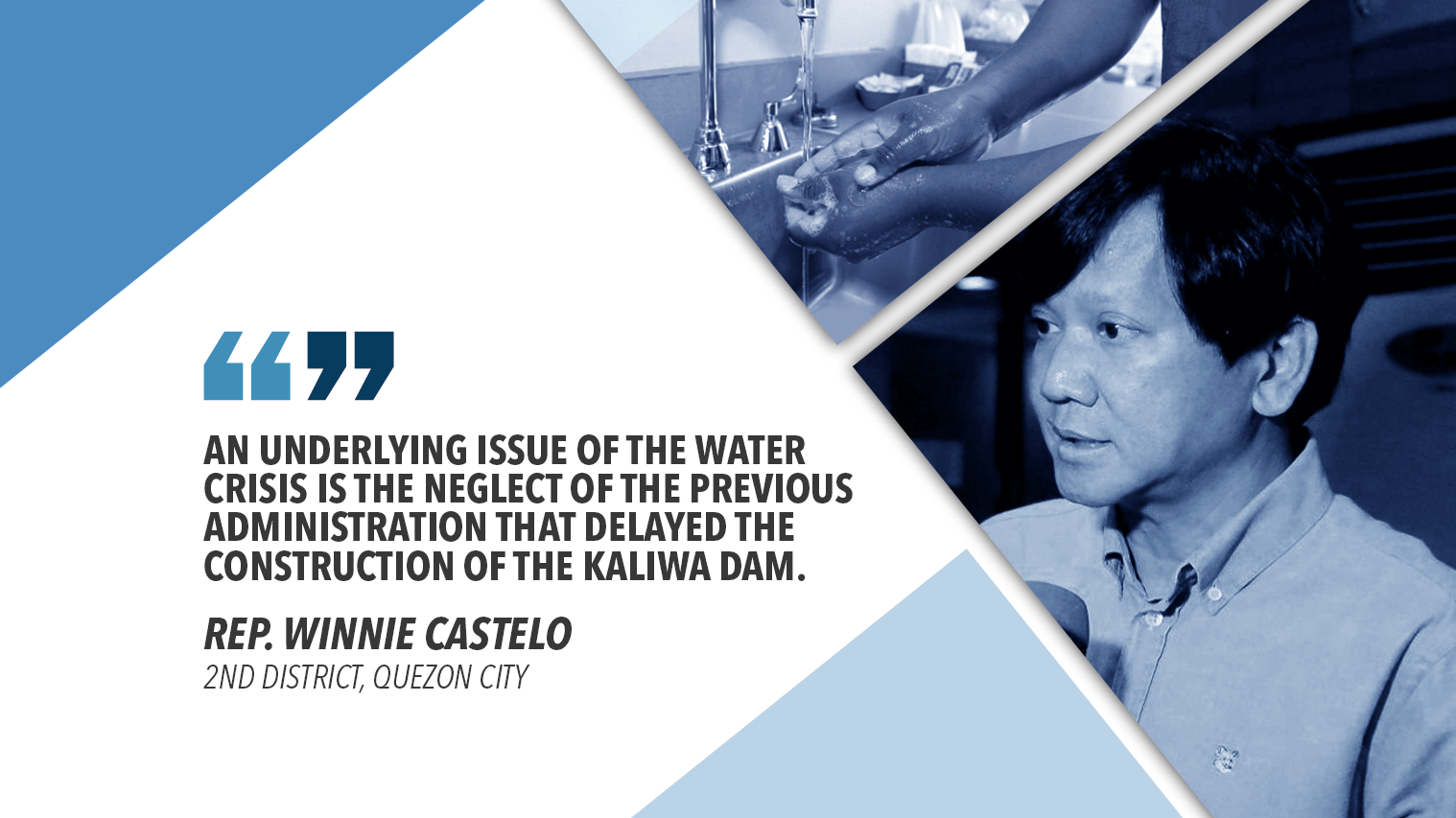The House Committees on Public Works and Highways and on Environment and Natural Resources adopted a proposed measure that seeks to create a new government office to rationalize the country’s water, irrigation, sewage, and sanitation systems as part of long-term measures to prevent a water crisis.
House Bill No. 8068, or the “Department of Water, Irrigation, Sewage, and Sanitation Resource Management Act of 2018,” was jointly adopted by the two panels during an oversight hearing called by Speaker Gloria Macapagal-Arroyo to look into the impending water shortage as Angat Dam in Bulacan reaches a critical level.
The proposed measure, which was authored by Arroyo, seeks to consolidate the functions being carried out by the National Water Resources Board (NWRB), Local Water Utilities Administration (LWUA), Metropolitan Waterworks and Sewerage System (MWSS) and the National Irrigation Administration (NIA).
The proposed measure seeks to consolidate the functions carried out by NWRB, LWUA, MWSS and NIA.
At present, these government agencies are controlled by three separate offices — the Department of Environment and Natural Resources (DENR), Department of Public Works and Highways (DPWH), and the Office of the President.
In pushing for the bill, Arroyo noted that the Philippines is rich in water sources, but the present set-up resulted in a “poorly coordinated or even conflicts in the implementation of national policies and plans… thereby resulting in backlogs in the provision of water supply and sanitation services to the public.”
“It must be stressed that the Philippine government’s responsibility to safe, clean, accessible and accessible drinking water, sanitation and irrigation services to the public are of utmost importance, and it is attainable through well-coordinated, effective, efficient and sustainable management of its water and sanitation resources,” the seasoned legislator said.
“The government’s responsibility to safe, clean, accessible and accessible drinking water, sanitation and irrigation services to the public are of utmost importance.”
The two House panels resolved that HB 8086 be part of the priority legislation that the House of Representatives should act upon in the upcoming 18th Congress.
If passed into law, the Department of Water will be mandated to develop policies to provide universal access to safe, adequate, affordable and sustainable water supply, irrigation, sewage, and sanitation services.
The Department will also be in charge of protecting and conserving water resources and managing its ownership, appropriation, utilization, exploitation, and development.
It will also assume all obligations of the relevant parts of the Department of the Interior and Local Government, Metro Manila Development Authority, NIA, NWRB, and the DPWH, through its attached agencies, LWUA and MWSS.
Meanwhile, the ongoing water crisis gripping Metro Manila was blamed on the alleged inaction of the past administration.
During the hearing, MWSS Administrator Reynaldo Velasco pointed out that a master plan on the water supply was completed in 2012 but nothing was done by the Aquino administration.
Part of the master plan is the construction of the Kaliwa Dam, which aims to provide water security, reliability, and additional supply for Metro Manila.
Despite its proposal in 2012, the Aquino administration failed to act on the matter, Quezon City Rep. Winston Castelo said, noting an underlying issue of the water crisis is the neglect of the previous administration that delayed the construction of the Kaliwa Dam.
“It was admitted that in the past administration, there was a talk on this but it did not materialize,” Castelo said.
The seasoned legislator then asked Velasco if it would be safe to assume that Metro Manila would not have experienced the current water crisis had the past administration not been remiss on their duty to roll out the Kaliwa Dam.
Velasco answered “yes.”
The construction of the Kaliwa Dam is now being fast-tracked by the administration of President Rodrigo Duterte as part of the two-phase “New Centennial Water Source (NCWS).”
Slated to begin in the second quarter of 2019, the three-year project involves the construction of a 27-kilometer tunnel from the source in the boundary of Infanta and General Nakar, Quezon province, to the treatment plant in Teresa and Antipolo, Rizal.
When finished, Kaliwa Dam is expected to supply 600 million liters of water per day.

